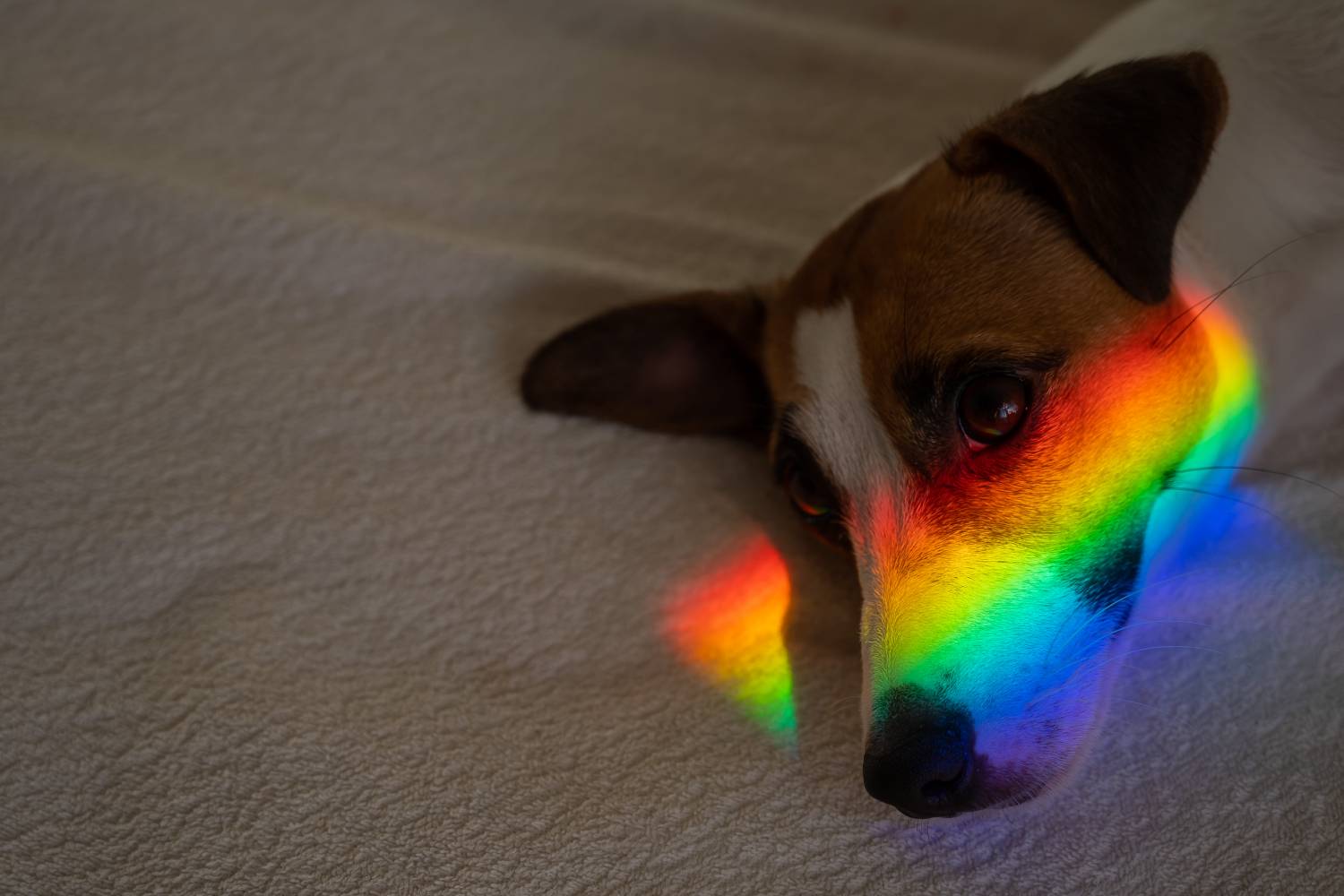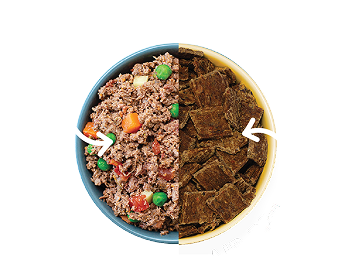
The Canine Rainbow: What Colors Can Dogs Actually See?
Table of Contents
- How Do Dogs’ Eyes Work?
- What Is the Science Behind Dog Vision?
- How Does Canine Eyesight Compare to Human Eyesight?
- How Does a Dog’s Color Vision Affect Their Daily Life?
- How Are My Dog’s Other Senses Affected?
- How Do We Enhance the Lives of Our Canine Friends?
- Embracing the World Through Our Dogs' Eyes
Have you ever tossed a red ball across the green grass and watched your canine companion bound after it with unbridled joy? Moments like these make us wonder: What exactly does our dog see? Does the ball stand out to them like it does to us?
Here at A Pup Above, we're as curious about your dog's experiences as you are. That's why we're delving deep into the kaleidoscope of dog vision to understand what colors dogs can actually see. In this journey through the canine color spectrum, we'll explore the science behind dog vision.
So, sit, stay, and read on as we uncover the vibrant world from our best friends' perspective. Because when it comes to their health and happiness, every detail matters.
How Do Dogs’ Eyes Work?
To understand how dogs see the world, we first have to look at the anatomy of a dog's eyes. The retina, the layer located at the back of the eye, is the starting line for vision. Here, we find the magic duo: rod and cone cells.
Rods are the heroes of low-light scenarios, allowing our dogs to easily navigate the twilight — think of them as built-in night vision goggles. Conversely, cones are responsible for detecting color and come in different types, each sensitive to different wavelengths of light.
Humans have three types, but dogs have fewer cones, simplifying their color perception. This setup gives us insight into the evolutionary paths that have honed a dog's eyesight to be perfectly suited for their needs.
What Is the Science Behind Dog Vision?
Dichromatic vision means two types of cones, and for dogs, this equates to a spectrum centered around two primary colors. Unlike humans, our canine friends experience what we can relate to as red-green color blindness.
While we enjoy a world rich with various hues, dogs live in an environment with a more limited palette, where certain colors blend into one another. That means the red ball on green grass is not as distinct to them as it is to us. This doesn't dampen their world. It simply alters it.
A dog's ability to see wavelengths is tuned to the blues and yellows, meaning the color spectrum they experience is not absent of color but focused on a different part of the rainbow. What's truly fascinating is how this translates into their daily lives, affecting everything from the design of dog toys to how they interpret their natural surroundings.
While they might not see the same array of different colors we do, they have the tapetum lucidum, a layer that acts like a mirror, reflecting light through the retina to enhance low-light vision. This unique adaptation gives dogs their incredible ability to see in dim light, a trait that served their ancestors well and continues to benefit our beloved pets today.
How Does Canine Eyesight Compare to Human Eyesight?
When it comes to both human and canine eyesight, it’s not so much about who sees better but the differences between the two types of vision.
Thanks to our three types of color receptors, humans have the edge in color diversity. We can enjoy the full range of the color spectrum, from the softest lavender to the deepest emerald.
With their fewer cones, dogs experience a more pastel version of our world. Yet, they make up for what they might lack in color variety in night vision. The tapetum lucidum in a dog's eyes acts like a mirror, reflecting light to maximize what they see in low-light conditions.
It's their secret weapon, giving them the upper paw when the sun dips below the horizon. Moreover, while our depth perception may enhance our ability to judge distances in bright light, our canine companions have us beat with their superior motion detection in dim light.
How Does a Dog’s Color Vision Affect Their Daily Life?
Understanding the nuances of dog vision has real-world implications. Recognizing that dogs see a more monochromatic world helps us pick toys in blues and yellows, which stand out against the green of the grass.
Even in the home, considering your dog's color vision can lead to a more enriching environment, ensuring their play and living spaces cater to their visual strengths. But the influence of a dog's color vision extends beyond play. It informs training techniques, where contrasting colors can make for more effective communication cues.
Veterinarians consider vision when recommending treatments and assessing a dog's overall health. For instance, they might consider how a dog's color perception could affect its behavior or stress levels in different environments.
How Are My Dog’s Other Senses Affected?
While color captivates, it's just one element of canine perception. Dogs may not see the full rainbow humans do, but nature has a way of balancing the scales.
Their sense of smell is the stuff of legend. It allows them to detect and decipher the world through their noses, often compensating for the less colorful visual experience.
Dogs also have a nuanced sense of hearing, detecting frequencies that escape our ears. While dogs may be color blind to certain hues, they read the world in a spectrum of smells and sounds, which gives them an understanding of their environment that's different from, but just as rich as ours.
Lastly, dogs often explore the world around them using their sense of taste. If you have a dog that often eats things off the ground or incessantly licks you, you have experienced this.
How Do We Enhance the Lives of Our Canine Friends?
Creating a multisensory environment for our canine friends means going beyond the visual. We can choose toys that cater to their dichromatic vision and engage their other senses with different textures and sounds.
When designing spaces for them to live and play, we can consider adding scent trails or auditory cues that align with their sensory strengths. Accessibility is also key in catering to canine needs.
A bed with a distinct color contrast from the floor can help them easily identify their special spot. Choosing collars and leashes with reflective materials enhances their visibility in low-light conditions, tapping into their superior night vision. Every choice is an opportunity to show our furry friends how much we care.
Embracing the World Through Our Dogs' Eyes
Our dogs experience the world differently, but not deficiently. Their vision, tailored by nature for their needs, is complemented by extraordinary senses that create a full, vibrant experience.
By recognizing the nuances of their perception, we can improve their quality of life, deepen our connection, and appreciate our multisensory experiences a bit more. Understanding their world through their eyes is just one way we demonstrate our commitment to their well-being.
Because when it comes to our dogs — our loyal companions, our protectors, our family — their happiness is our happiness. As we continue to share insights and tips that honor their health and joy, we invite you to see the world from a dog's perspective, even if it's just a little less colorful.
Sources:
Anatomy, Head and Neck: Eye Retina | National Library of Medicine
Top Stories

Why Do Dogs Lick Their Paws?

Why Do Dogs Whimper & Make Noises in Their Sleep?

Healthy Vet-Approved Homemade Dog Food Recipes

How To Cook Sweet Potatoes for Dogs






















